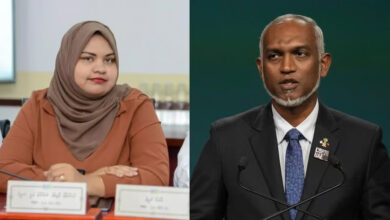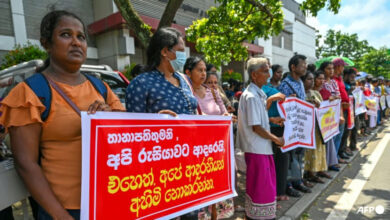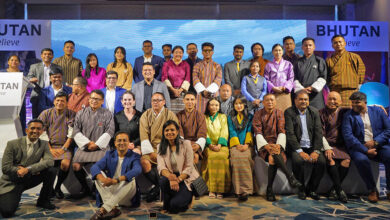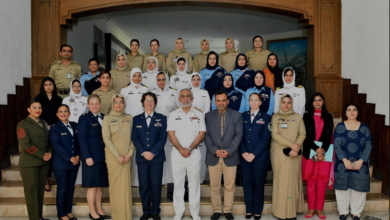No milk, no eggs, small hope: fears rise for Sri Lanka’s malnourished children
Close to half the crisis-hit country’s under-fives go hungry and one in five suffer from wasting. Mothers tell here of their struggle as Unicef warns of a blighted generation

By Zinara Rathnayake in Colombo
For more than a year now, Anne Roshel has had no milk to give her two children, neither fresh nor powdered. Looking out from the kitchen door on a sweltering afternoon in July, she says her eight-year-old son has just a potato-stuffed bun for breakfast. Sometimes it’s a packet of rice with pol sambol (coconut relish), chilli and lime.
A single mother, Roshel, 27, lives in her parents’ crumbling cement house with the children and her father. Monsoon rain has washed off the pink coating on the walls, and a small veranda opens to a road in Koloniya Wella, a coastal hamlet in Chilaw, 80km (50 miles) north of the Sri Lankan capital Colombo.
On some days, Roshel sells achcharu (raw or semi-ripe fruits dusted with chilli and salt) to schoolchildren from a roadside stall. When the sea is calm, her father goes fishing. Then Roshel can cook fish curry for lunch.
“When he was born, my second son was underweight. My husband had just left and I didn’t have proper meals. I want to feed my son apples and grapes, but I can’t afford them,” says Roshel, showing the nine-month-old boy’s child health and development report, given to all children in Sri Lanka.

Roshel is no exception. Hunger is the norm in Sri Lanka now. Last October, the healthy ministry found that 42.9% of under-fives in Sri Lanka have some form of undernutrition. A March 2023 report by the Medical Research Institute says that 19.8% of children between six and 59 months suffer from wasting, the most acute form of malnutrition that occurs when children don’t have enough quality food or have prolonged illnesses. Children become too thin for their height.
“It’s a very alarming situation,” says Abner Daniel, a nutrition expert at Unicef Sri Lanka. “We are seeing an overall worsening of all nutrition levels. The nine months of pregnancy and the first two years after birth are the most critical window. It impacts children, even much later in life.”
Last year’s economic crash and political upheaval are being felt all over Sri Lanka as worsening nutrition levels take a toll on children’s health.
Since independence from Britain in 1948, Sri Lanka has rolled out several welfare programmes to boost food security, but Daniel says: “The progress made in recent decades seems to have now washed off.”

The crumbling economy, poor agricultural planning and falling buying power have made 6 million people, nearly 30% of the country’s population, food insecure. A survey by LirneAsia, a Colombo-based policy research institute, estimates that more than 4 million people have fallen into poverty in Sri Lanka since 2019, pushing the poverty rate up to 31%.
duleeka Madhunamali, 26, lives in Naththandiya, south of Chilaw. Her husband cuts grass to earn 10,000 Sri Lankan rupees (£24) a week. It’s barely enough to feed their three children. “Even if we don’t have food, we make sure we somehow feed our daughters. But we can’t buy fish and eggs. It’s very expensive now,” Madhunamali says while repairing clay pots in their one-bedroom cement-block house. One pot earns her only 18 rupees – less than 5p.
“More and more families are adopting coping strategies to put food on the plate,” says Daniel. They compromise on nutritious food, eat less and skip meals. Protein sources like dal, eggs, fish and chicken are scarce and expensive, so most of them eat carb-heavy food like rice to fill their stomachs.
“We see parents compromise on their children’s education, and not send them to school because transport costs are high. So they use that money to put a meal on the table,” says Daniel.

Child malnutrition is seen all across the country. KS Chithra (who didn’t want to give her first name), is a public health midwife working in Bogawantalawa, a tea-growing region 90 miles east of Colombo. She monitors young children’s health, and says that most children from the tea estate families are severely underweight.
“Most mothers are impoverished tea pluckers who earn a daily wage,” she says. “So within three months of childbirth, they leave their infants to go to work. They don’t get to breastfeed their babies. Sometimes, infants maintain a healthy weight during breastfeeding but then their weight drastically drops because families can’t afford to feed them.”
Most estate families are now eating flatbread made from wheat flour to sate hunger. Government welfare programmes had been handing out free thriposha, a maize-based nutritious cereal, to all children under five and pregnant mothers every month across Sri Lanka. Now thriposha is only given to children up to the age of three.
“And they only give it from time to time, not every month,” says Chithra.
Since the economic crisis, pregnant women in some estates haven’t received cash vouchers from the National Nutrition Programme that has helped pregnant women, says Chithra.
Children who are severely underweight in the estates now receive high-energy, paediatric-recommended biscuits funded by humanitarian aid organisations. Unicef provides four months of small cash transfers of 6,750 rupees (£16) to 110,000 vulnerable families across Sri Lanka to help feed babies born from May 2021 to December 2022.
Back in Chilaw, Roshel has used Unicef funds to treat her son’s asthma and buy dry fish for her children. Her nine-month-old is now within a healthy weight range. But Chithra, the midwife, says: “The help from nonprofits is no longer enough because the crisis continues to put a toll on poor mothers.”
And Daniel, from Unicef, has a warning too: “Most impacts of child undernutrition are not visible yet in Sri Lanka, but the data and evidence show that the situation is grim, and you cannot wait any more..”
This article was amended on 15 August 2023 to correct an error in converting Sri Lankan rupees to sterling.
source : the guardian




